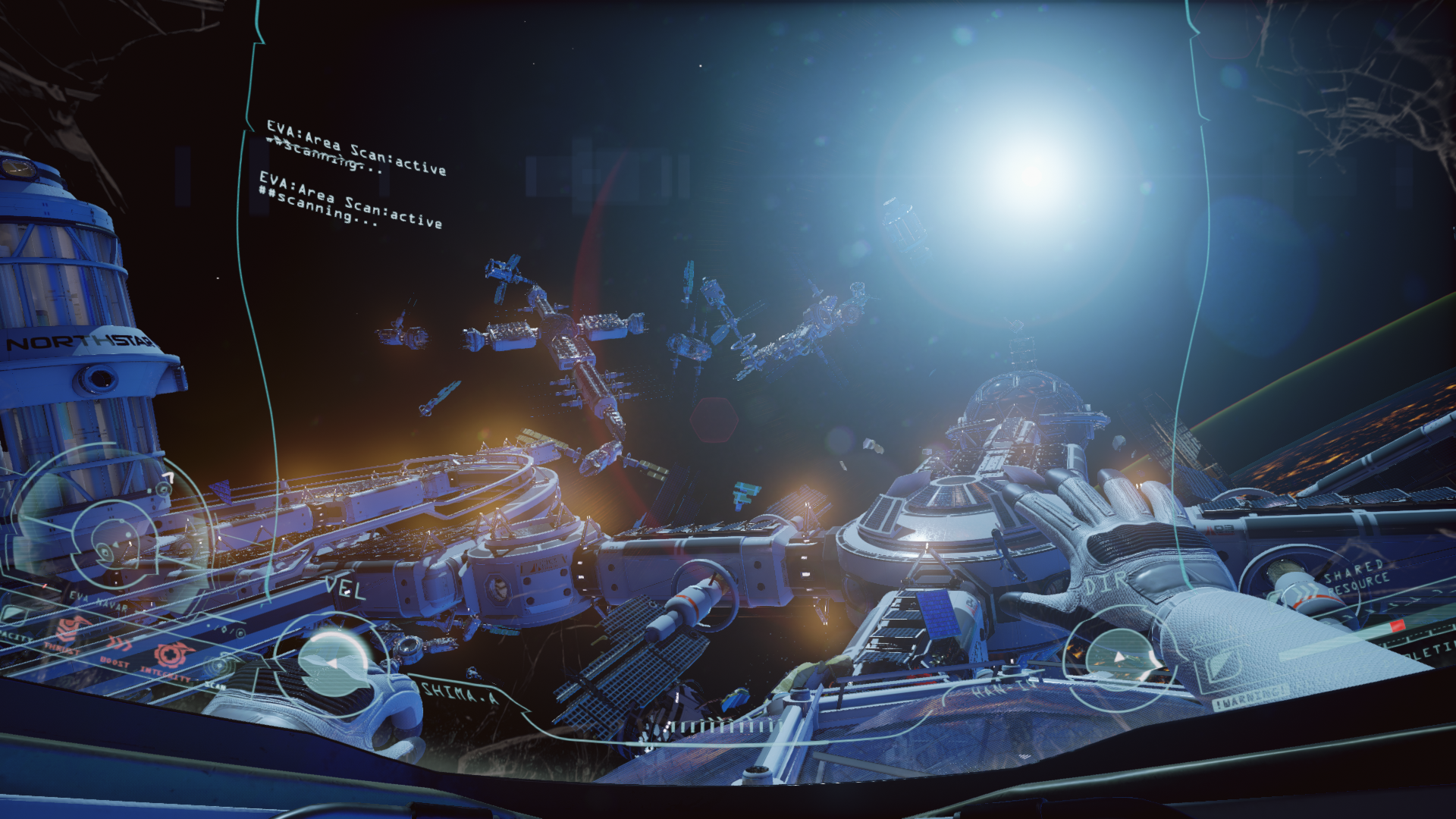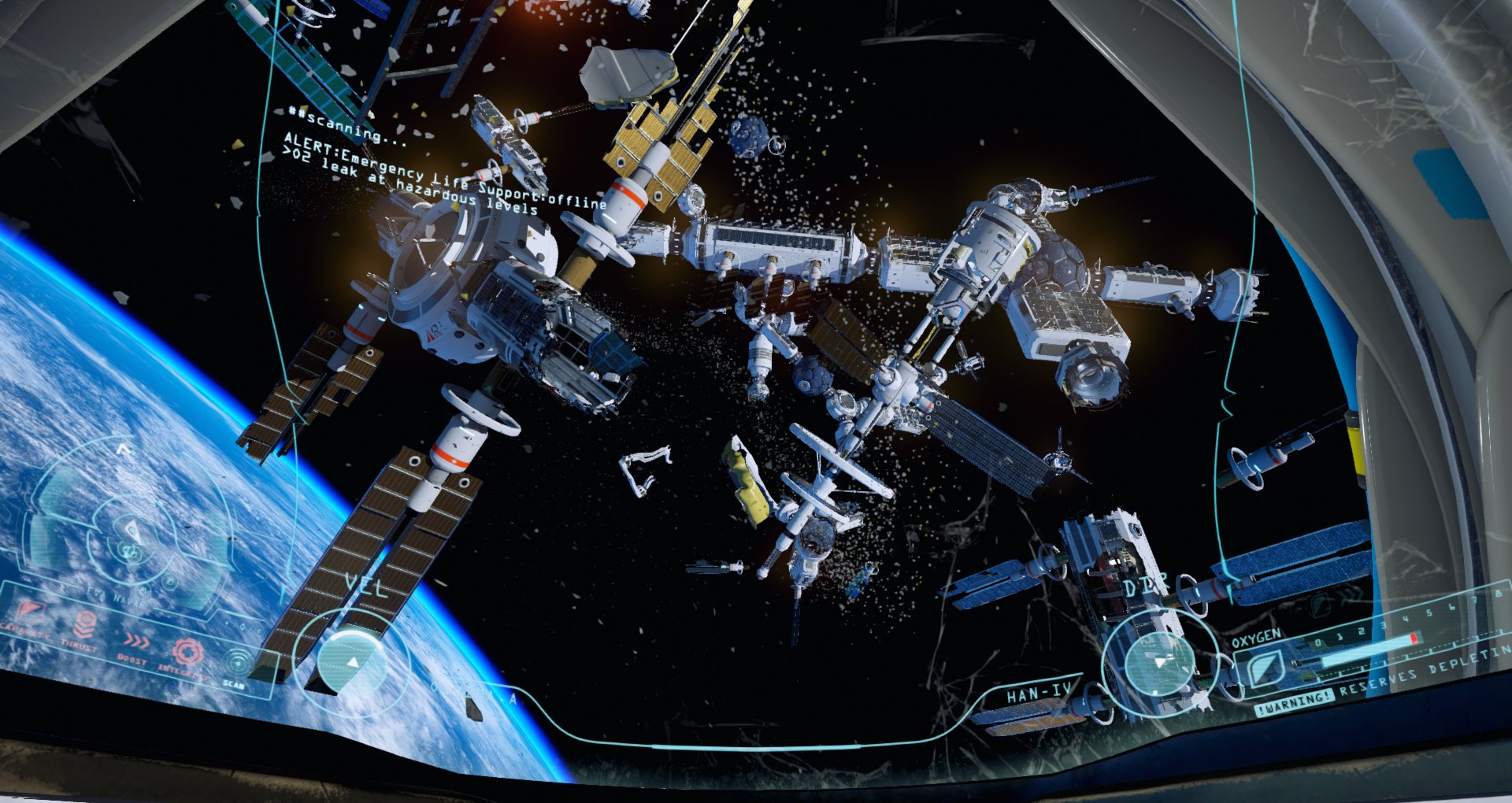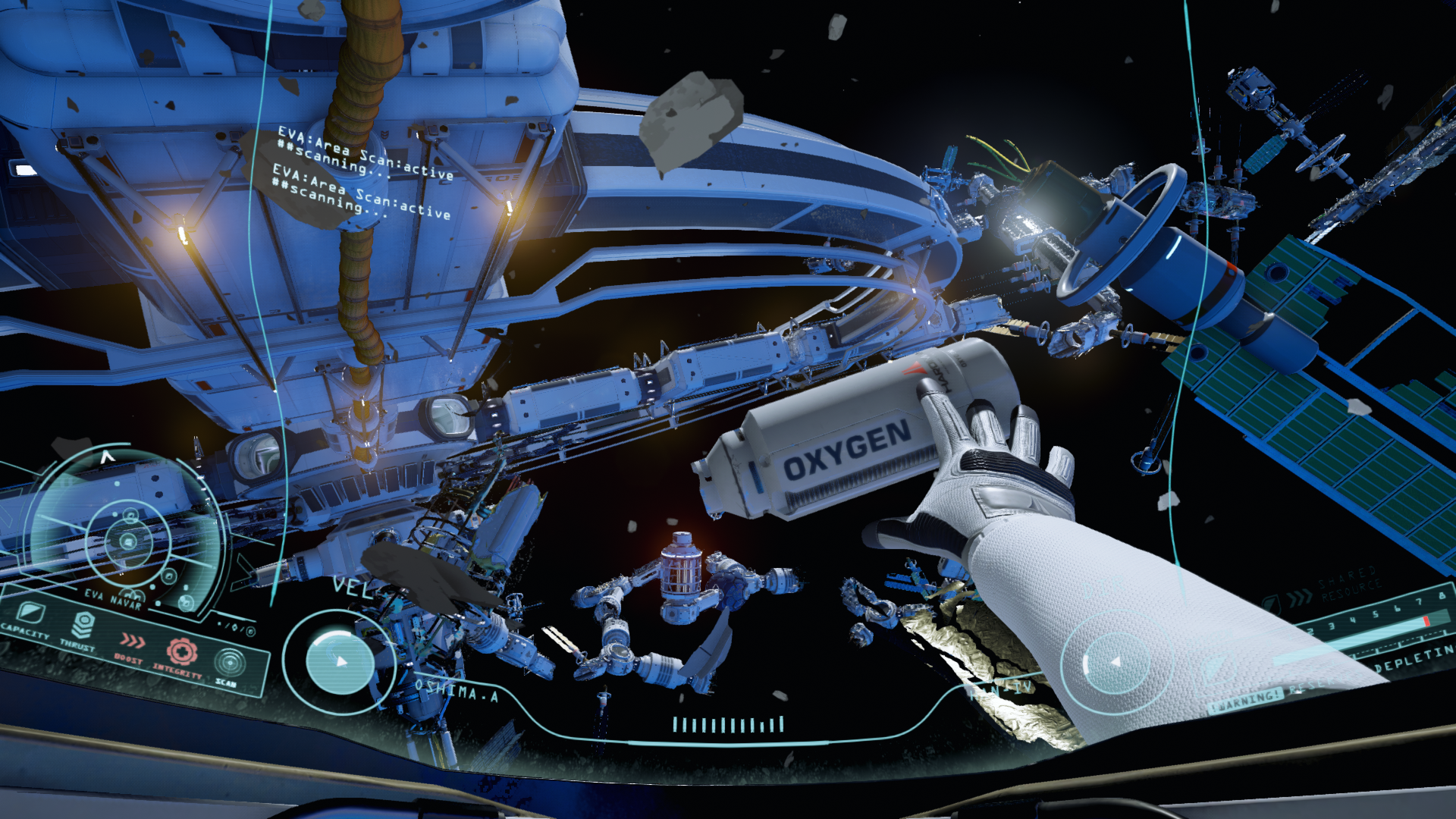Our Verdict
Beautiful as you could ask for, especially in VR, but exhaustingly repetitive.
PC Gamer's got your back
What it is: A first-person game in which you’re an astronaut trying to escape from a heavily damaged space station orbiting earth.
Expect to pay: $20/£15
Developer: Three One Zero
Publisher: 505 Games
Reviewed on: Intel i7 x980 3.33 GHz, 9 GB RAM, Nvidia GeForce GTX 960
Multiplayer: No
Link: Official Site
The first time I reached out and snatched an oxygen canister in Adr1ft I felt tremendously satisfied. The first-person adventure takes place following a disaster on a massive space station orbiting Earth (if you’ve seen the film Gravity you get the idea), and as I floated in zero-G amid clouds of wreckage and debris, my space suit was rapidly leaking O2. While struggling to control my movement with thrusters, small oxygen canisters spun and drifted just out of reach. I held down a button to grab one and my arm extended, my hand desperately reaching for the bottle as it tumbled past. A little more thrust in the right direction and my hand clasped the bottle, plugged it into a port on my suit, then discarded it, letting it spin slowly away into the void.
Unfortunately, grabbing O2 canisters is something you have to do dozens, maybe even a hundred times before the end of Adr1ft. Your suit continues to leak O2, and since your thrusters also use oxygen you need to replenish your supply almost constantly. As you make your way slowly through the enormous, shattered space station, activating computer terminals and restoring power to critical systems, you’ll spend almost all of your time trying to spot spare O2 canisters and wall-mounted oxygen stations so you don’t asphyxiate. Later you’ll upgrade your suit to hold more oxygen, meaning less frequent top-ups, but it’s still something you need to closely monitor. Like the number 1 crammed into Adr1ft’s title, the O2 hunt feels intrusive and distracting, taking away from what might have been an immersive and haunting experience.
Space balls
Adr1ft is beautiful. Debris floats and spins through the station and in the surrounding space—some of it can be enjoyably batted away with your hand—and there are a number of interesting looking modules in the station: botany labs, communications arrays, and living quarters. The animation of your arms and hands as you open airlocks, use oxygen and repair stations, and grasp floating objects is fantastic. But the beauty of the game gets lost during your near-constant hunt for cans of O2, and by the tenth time I watched my arms open an airlock or haul my body into an EVA suit repair station—the same ten second animation every time—I'd seen enough of that.
The other tasks involve reaching distant computer terminals, holding down a button, and waiting for some audio, text readout, or animation to complete. Even the majesty of space-walking between station modules wears off simply because it takes so long. It’s hard to remain awestruck when there’s really nothing to do but tap your thruster button for several minutes. And, of course, you can only stare in wonder for a few moments before you have to begin scanning the area for more air cans.

The sense of urgency makes me feel vulnerable and in danger, but I think being the sole survivor in a ruined space station promotes that feeling naturally without constantly forcing me to be on the verge of asphyxiation. Dying is another thing that’s horrifying the first time: you see your hands helplessly clawing at your helmet in front of you, but after a couple of deaths I would just manually reload from the last checkpoint to skip the extended animation before it completed. Also making things occasionally frustrating is your minimap, which is presented in a flat 2D display, an arrow pointing you ever onward to your next objective. While you spin and float in 3D space, however, it can be more than a little tricky to figure out exactly where and what it’s pointing to. Several times I drifted off into space, following a vague pointer, only to suffocate and have to restart.

R1ft
I played most of Adr1ft on my PC but also tried it in VR using the consumer version of the Oculus Rift. As you’d expect, Adr1ft looks fantastic in VR. Since the Rift doesn’t have VR hand controllers yet (I used an Xbox controller), it doesn’t really feel like you’re reaching for something any more than playing on a regular monitor does, but it’s still a far eerier and more immersive experience, and the zero-G debris and views of Earth are stunning.
It’s a little odd as well. Since your spacesuit helmet is fixed on your shoulders, turning your head doesn’t mean you can look behind you: you just wind up looking at the inside of your helmet. So, you can’t look over your shoulder to see a nice view of the Earth, you still have to physically turn yourself around to see behind you. You also have to crane your neck down at the inside of your helmet’s visor to see HUD elements like the O2 readouts and minimap. It works in most respects: it does really seem like you’re wearing a big-ass spacesuit. At the same time, I wish the HUD was a little easier to see, especially since you have to check your air supply so frequently.

I never felt sick playing in VR. Rolling myself from side to side gave me a brief, mildly uncomfortable feeling, but only the first few times. I should say that one of our video shooters and editors Max Barbanell also tried it, and he felt extremely uncomfortable after only a few minutes of play.
As long as you can stomach it, there are bits of story to find as you travel through the wreckage: audio logs you can pluck from in front of you and play (and plenty that play on their own) and personal emails to read (why I’m reading emails while I’m seconds away from death, I can’t really say) to uncover the reasons behind the disaster. The voice acting and writing is well done, though I didn’t find the story particularly compelling—as in Gravity, the visuals and setting are more important than anything else.
Exploration games like Dear Esther draw a fair amount of ire from players who don’t consider them real games, but Adr1ft and its near-constant O2 hunt feels like it’s trying too hard to be a game, and the experience suffers for it. While VR certainly adds to the immersion and excitement, it doesn’t do anything to overcome the repetition of tasks that stifles the enjoyment I might get from really examining Adr1ft's space.
Beautiful as you could ask for, especially in VR, but exhaustingly repetitive.

Chris started playing PC games in the 1980s, started writing about them in the early 2000s, and (finally) started getting paid to write about them in the late 2000s. Following a few years as a regular freelancer, PC Gamer hired him in 2014, probably so he'd stop emailing them asking for more work. Chris has a love-hate relationship with survival games and an unhealthy fascination with the inner lives of NPCs. He's also a fan of offbeat simulation games, mods, and ignoring storylines in RPGs so he can make up his own.


